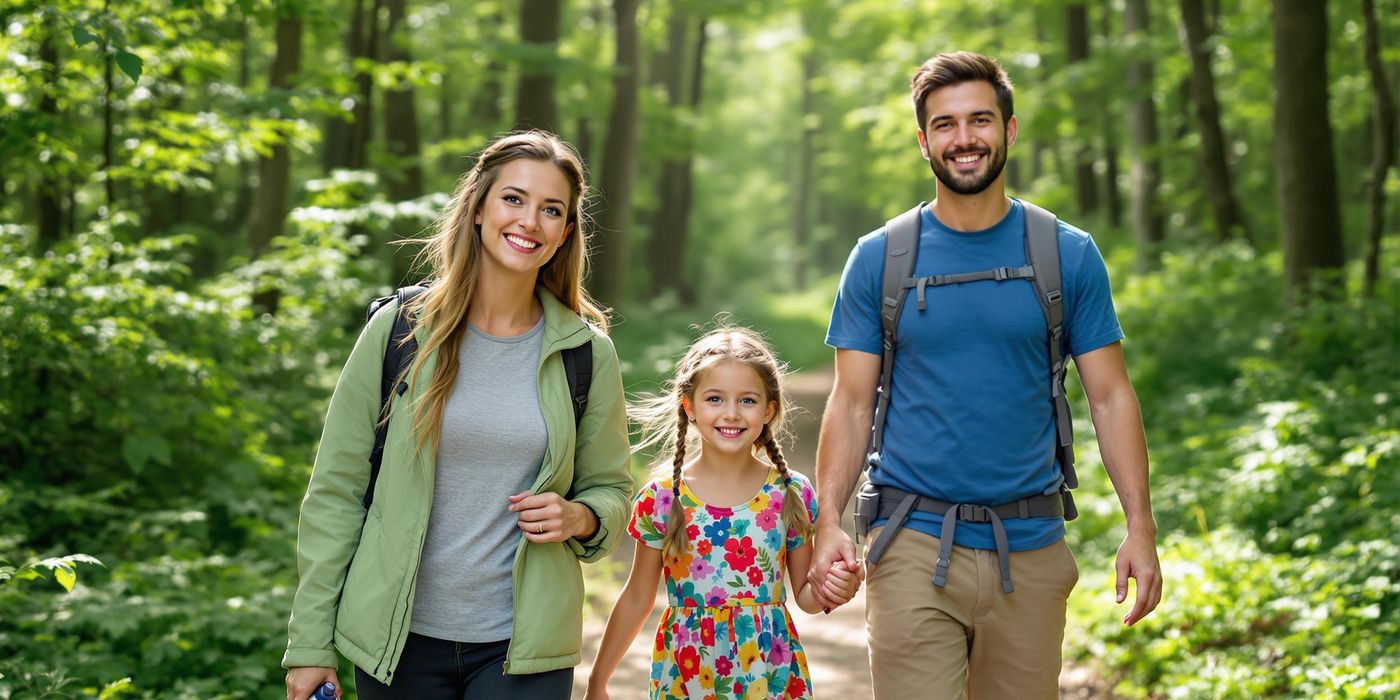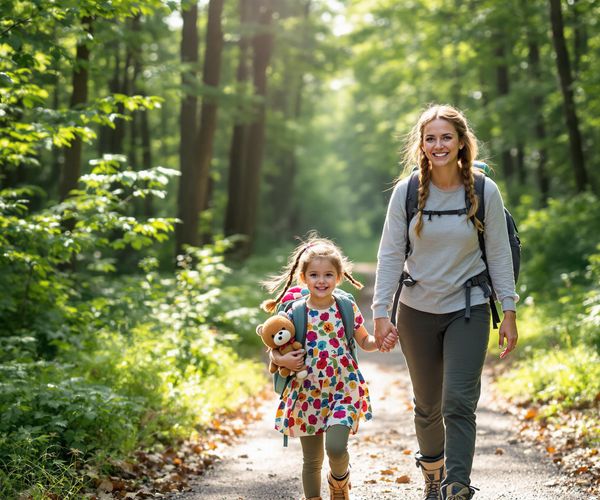Hej everyone! Astrid here, your friendly librarian from Heidelberg, ready to whisk you away on a journey into the heart of nature. As someone who grew up surrounded by the serene landscapes of Sweden and now calls Germany home, I've always found solace and inspiration in the great outdoors. Join me as we explore how to travel responsibly and immerse ourselves in the beauty of our planet.
Embracing the Outdoors: A Librarian's Perspective
Growing up in Eksjö, Sweden, nature wasn't just a backdrop; it was an integral part of my life. My childhood memories are filled with the scent of pine needles, the sound of rustling leaves, and the feeling of cool lake water on my skin. This deep connection to nature has shaped my values and continues to influence my travel choices. I find myself drawn to destinations where I can reconnect with the earth and experience the tranquility that only nature can provide.
My interests in Scandinavian folklore and sustainable living also play a significant role in my travel planning. Scandinavian folklore often celebrates the interconnectedness of nature and humanity, reminding us of our responsibility to protect the environment. Sustainable living, a core value in many Scandinavian communities, encourages us to minimize our impact on the planet. When I travel, I seek out experiences that align with these values, such as visiting eco-friendly accommodations, supporting local artisans, and engaging in activities that promote conservation.
My family shares my love for the outdoors, especially hiking. Whether it's exploring the trails of the Odenwald forest near Heidelberg or venturing further afield, hiking allows us to bond, exercise, and appreciate the beauty of our surroundings. These shared experiences have instilled in my daughter, Linnea, a sense of wonder and respect for nature, which I hope she carries with her throughout her life.
Planning Your Adventure: Essential Travel Tips
Before embarking on any outdoor adventure, thorough planning is essential. Start by researching your destination, including its climate, terrain, and local customs. Look for reputable tour operators who prioritize sustainability and responsible tourism. Reading reviews and seeking recommendations from other travelers can provide valuable insights.
If your trip involves hiking, careful planning and preparation are crucial. Always map out your route in advance, taking into account the distance, elevation gain, and difficulty level. Inform someone of your plans, including your route and estimated return time. Carry a map, compass, and GPS device, and know how to use them. Familiarize yourself with the local flora and fauna, and be aware of any potential hazards, such as poisonous plants or wildlife.
Checking the weather forecast is a must before any outdoor excursion. Be prepared for changing conditions, as the weather in mountainous or coastal areas can be unpredictable. Pack appropriate clothing layers, including rain gear and sun protection. It's always better to be overprepared than underprepared when it comes to safety.
Sustainable Practices: Eco-Friendly Travel
Traveling sustainably is about minimizing your impact on the environment and supporting local communities. One of the easiest ways to reduce your carbon footprint is by choosing eco-friendly transportation options. Trains and buses are generally more sustainable than airplanes, especially for shorter distances. If you're renting a car, consider an electric or hybrid vehicle.
Packing light is another simple yet effective way to minimize waste and conserve resources. Bring only what you need, and opt for reusable items whenever possible. Carry a reusable water bottle, coffee cup, shopping bag, and cutlery set. Avoid single-use plastics, which contribute to pollution and harm wildlife.
Supporting local economies is an integral part of sustainable travel. Purchase souvenirs from local artisans, dine at local restaurants, and stay in locally owned accommodations. This not only benefits the community but also provides a more authentic and enriching travel experience. By supporting local businesses, you're helping to preserve cultural traditions and promote economic development.
When choosing accommodations, look for those that prioritize sustainability. Many hotels and guesthouses have implemented eco-friendly practices, such as using renewable energy, conserving water, and reducing waste. Look for eco-certifications, such as the Green Key or LEED, which indicate that the property meets certain environmental standards.
Gear Up: Recommended Equipment for Outdoor Travel
Having the right gear can make all the difference when it comes to enjoying your outdoor adventures safely and comfortably. For hiking, comfortable hiking boots are essential. Choose boots that provide good ankle support and traction. Pair them with moisture-wicking socks to prevent blisters.
Layering your clothing is key to staying comfortable in varying weather conditions. Start with a moisture-wicking base layer, add an insulating mid-layer, and top it off with a waterproof and windproof outer layer. Don't forget a hat, gloves, and scarf, especially in colder climates.
Rain gear is a must-have for any outdoor trip, regardless of the season. A lightweight, waterproof jacket and pants will keep you dry in wet conditions. Sun protection is equally important, even on cloudy days. Wear sunscreen, sunglasses, and a wide-brimmed hat to protect yourself from the sun's harmful rays.
Navigation tools are essential for hiking and exploring unfamiliar areas. Carry a map, compass, and GPS device, and know how to use them. A comprehensive first aid kit is also a must-have, along with emergency supplies such as a whistle, headlamp, fire starter, and extra food and water.
Safety First: Staying Safe on the Trails
Hiking safety should always be a top priority. Hike during the day and avoid hiking alone, especially in remote areas. Stay on marked trails and avoid shortcuts, which can be dangerous and damaging to the environment. Be aware of your surroundings and watch out for hazards such as slippery rocks, steep drop-offs, and unstable terrain. Avoid climbing on waterfalls, as they can be extremely dangerous.
Packing the ten essentials is crucial for any hiking trip. These include navigation tools, sun protection, insulation, illumination, first aid supplies, fire starter, repair kit and tools, nutrition, hydration, and emergency shelter. Familiarize yourself with these items and know how to use them in an emergency.
Wildlife encounters can be unpredictable, so it's important to know how to handle them. Keep a safe distance from animals and never approach or feed them. Store food properly to avoid attracting wildlife to your campsite. Be aware of poisonous plants, such as poison ivy, oak, and sumac, and know how to identify and avoid them.
Nature Photography: Capturing the Beauty Around You
Nature photography is a wonderful way to capture the beauty of the natural world and share it with others. The best times of day for nature photography are typically the golden hour (shortly after sunrise and before sunset) and the blue hour (the period of twilight before sunrise and after sunset). During these times, the light is soft, warm, and diffused, creating stunning images.
Camera settings will vary depending on the subject and lighting conditions. For wildlife photography, use a fast shutter speed to freeze motion and a wide aperture to blur the background. For landscape photography, use a narrow aperture to maximize depth of field and a low ISO to minimize noise.
Patience is key to successful nature photography. Spend time observing your surroundings and studying the behavior of animals. The more you understand nature, the better you'll be able to anticipate and capture those special moments. Composition techniques, such as the rule of thirds and depth of field, can help you create visually appealing images.
Activities for Everyone: Exploring Outdoor Hobbies
There are countless ways to enjoy the great outdoors, from hiking and kayaking to camping and cycling. Choose activities that suit your interests and fitness level. Sustainable hiking and camping practices are essential for preserving the environment. Stay on marked trails, pack out everything you pack in, and avoid disturbing wildlife.
Nature journaling is a wonderful way to connect with nature on a deeper level. Take a notebook and pen with you on your outdoor adventures and record your observations, thoughts, and feelings. This can help you develop a greater appreciation for the natural world and improve your writing skills.
Volunteering in conservation projects is a rewarding way to give back to nature. Participate in community clean-up events, help restore habitats, or assist with wildlife monitoring. By getting involved in conservation efforts, you're making a positive impact on the environment and helping to ensure that future generations can enjoy the beauty of nature.
Explore travel tips for outdoor enthusiasts, focusing on hiking, nature photography, and sustainable outdoor activities.









